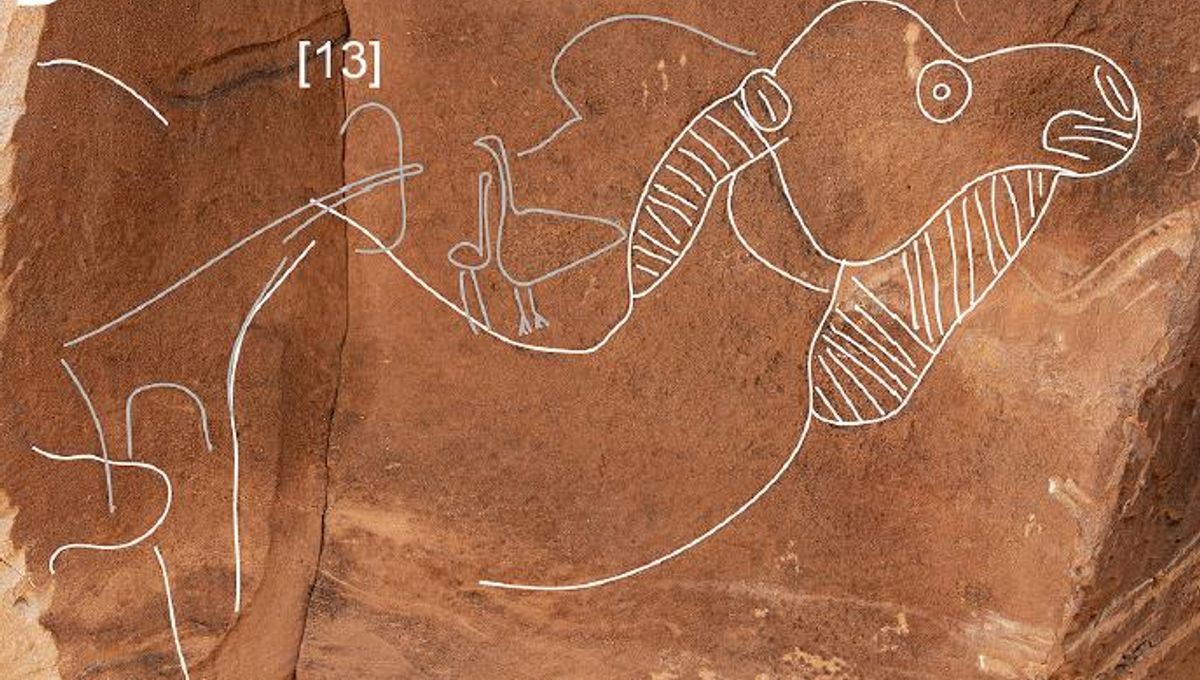
There is much we do not know about the nomadic peoples who lived in Saudi Arabia before the Neolithic era. We know there are amazing monumental stone structures and accompanying cave art from this time, as well as the remains of hearths that indicate temporary habitation, but not a lot else. Now, researchers have uncovered new mysterious carvings that provide fresh insights into this ancient history.
The carvings were discovered on a rock outcropping near the southern edge of the Nafud desert, in north-central Saudi Arabia. So far, nine large life-sized specimens have been identified across five panels. In many instances, the camels have had other camels carved over the top of them or their features and proportions improved, suggesting the site was in use and revisited over a long period of time.
The animals depicted in these carvings are thought to be a species of wild camel that is now extinct but roamed across the deserts thousands of years ago. To date, scientists have not given this lost species a name, so we do not know much about them. But the art is pretty detailed, showing predominantly male camels complete with thicker winter fur that had not molted. These details alone suggest the art may have been created during the animal’s rutting season (between November and March).
The cave art appears at a site called Sahout, which has been known to archaeologists for a while, but the camel carvings were hidden until recently. That’s where the work of Maria Guagnin, a postdoctoral researcher at the Max Planck Institute of Geoanthropology, and colleagues comes in.
“One of the panels had been flagged in a report and in a publication of the Saudi Heritage Commission and we wanted to find it to see its context”, Guagnin explained to IFLScience.
“The site was quite challenging to find, because the local topography consists of long, low-lying sandstone ridges so there are many possible locations for rock art panels, making it harder to spot. It was also 42 Celsius (107.6 Fahrenheit) on that day making it physically hard to survey.”
According to radiocarbon dating analysis of the two trenches and two ancient hearths found nearby, the Sahout site was repeatedly visited during what is called the late Pleistocene period (2.6 million to around 11,700 years ago) and the Middle Holocene (7,000 to 5,000 years ago).
“For the first time we have evidence to suggest this rock art may be older than previously thought. It’s also the first time that we found a rock art site associated with early Holocene and even terminal Pleistocene archaeological deposits”, Guagnin added.
There are not many archaeological sites dated to this early period, so rock art like this may help researchers find similar ones in the future for comparison. This may be because they share similar styles of carving or because they were drawn to similar features in the landscape that also appealed to later rock art creators.
Although more research is needed to ascertain the significance of the camels at Sahout, Guagnin has already made connections between these specimens and others.
“To me what’s interesting is that we have a panel with low relief – potentially providing a link to reliefs such as at the Camel Site. But there are also lots of panels in 2D, and lots of panels with later/Neolithic rock art. So this allowed us for the first time to link a site to the Camel Site reliefs and also to [other] Neolithic rock art sites such as Jubbah and Shuwaymis.”
“This helps us figure out how old individual rock art phases might be. This mix of different styles is also our first clue that the large camel engravings might be older than the Neolithic.”
The paper was published in Archaeological Research in Asia.
Source Link: Amazing Life-Sized Camel Rock Carvings Discovered In Saudi Arabia – But Who Carved Them?